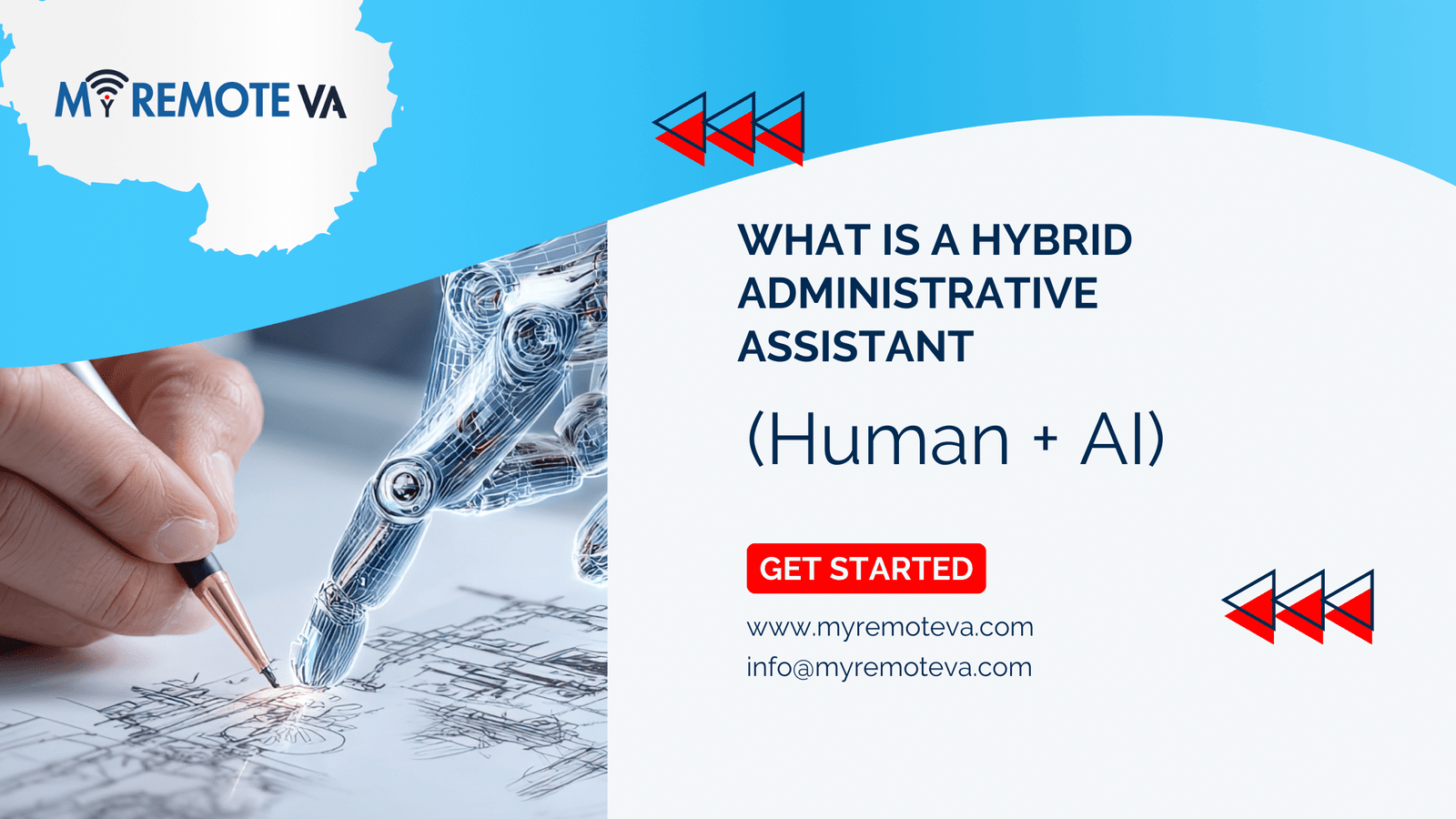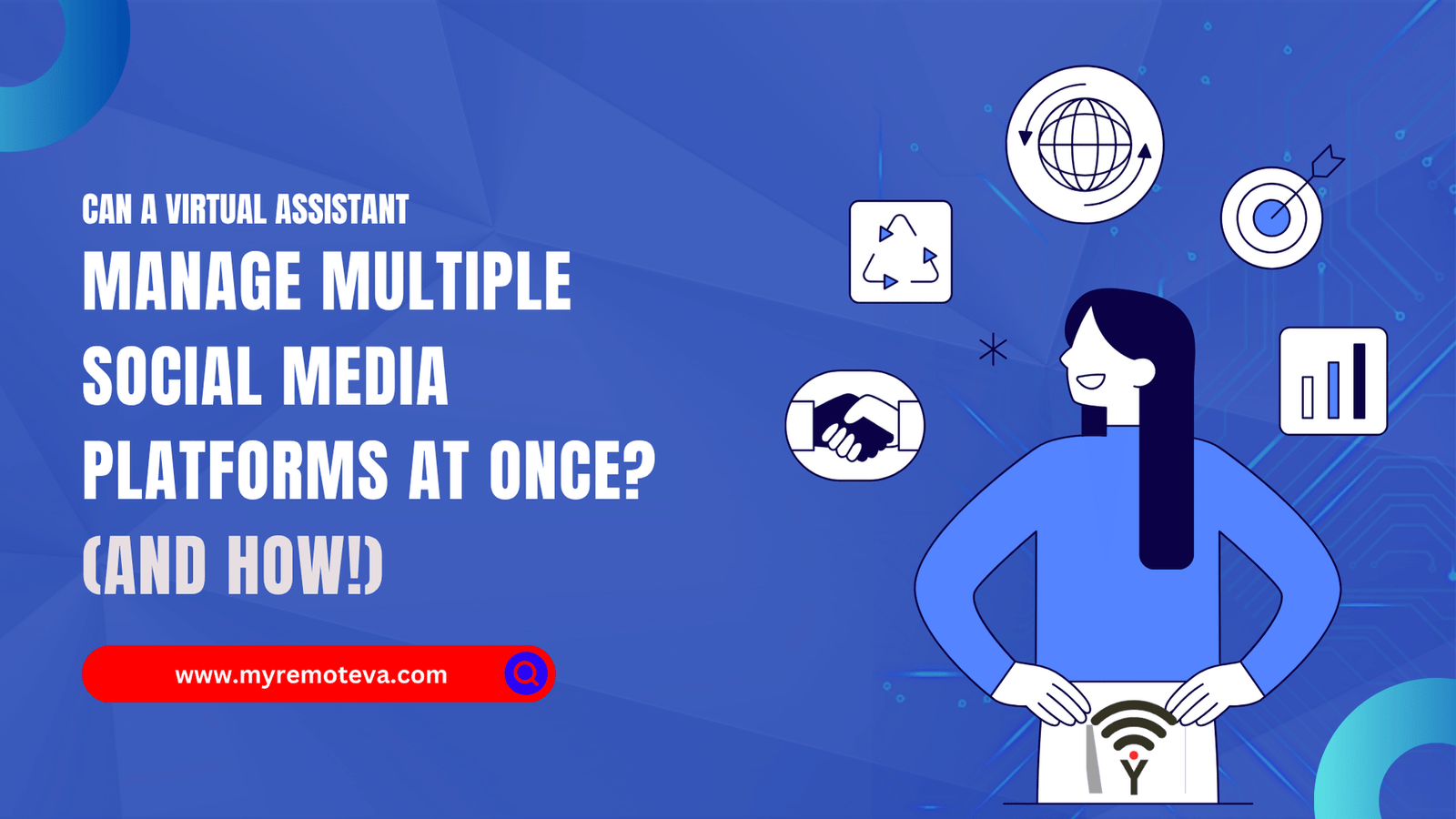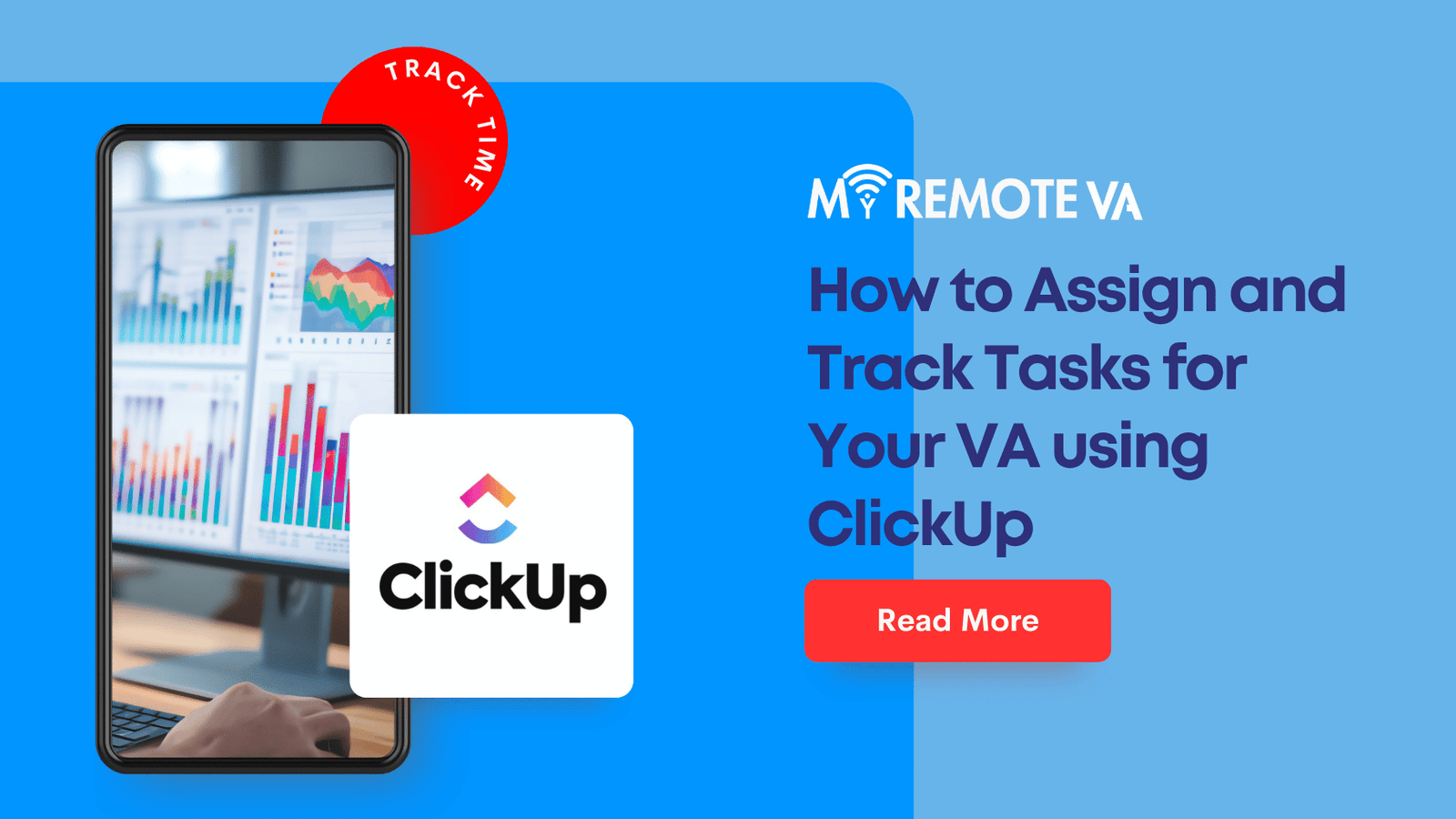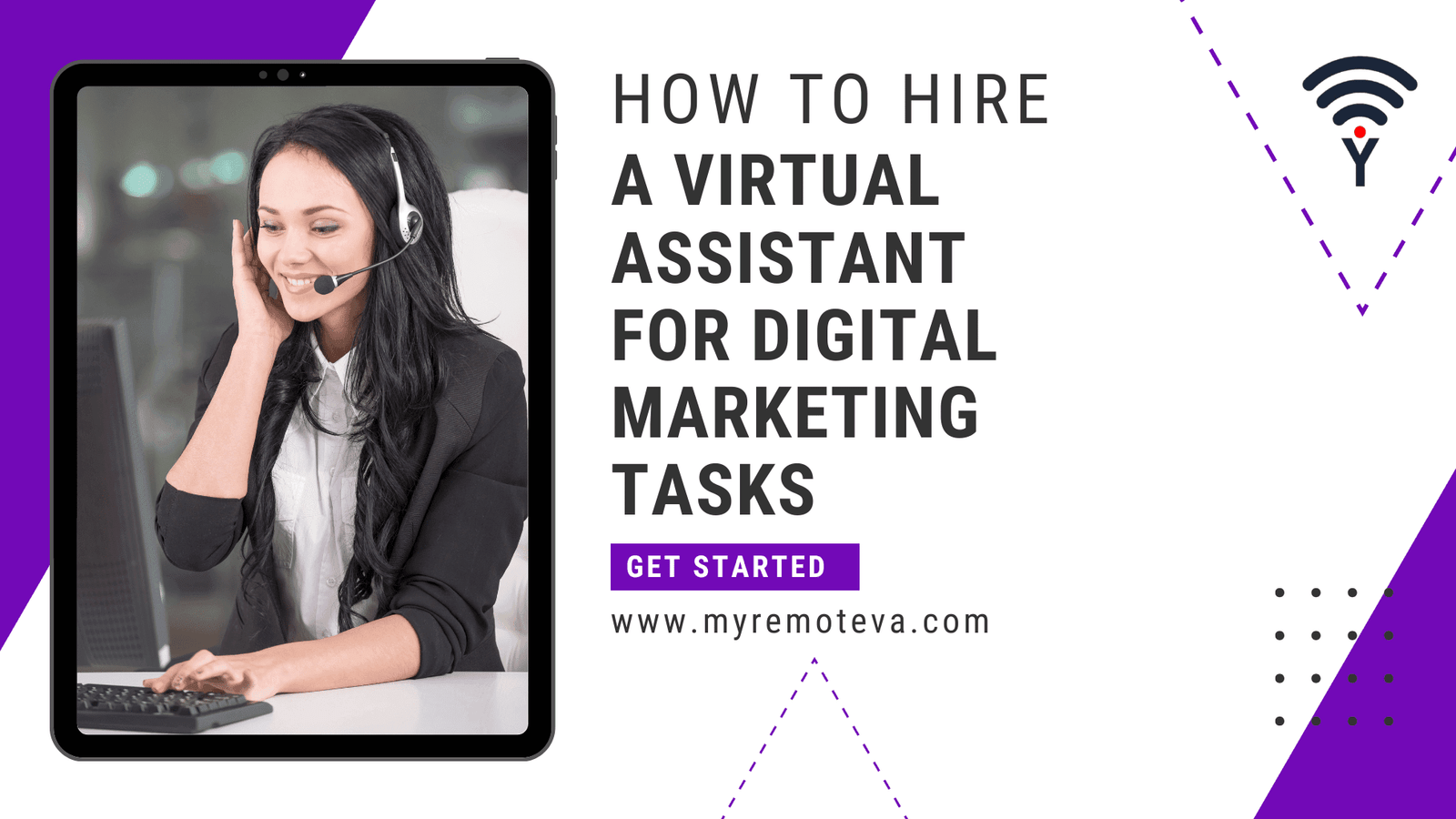What is a Hybrid Administrative Assistant (Human + AI)?
A hybrid administrative assistant leverages the combined strengths of human expertise and artificial intelligence to provide efficient and comprehensive support. This model isn’t about replacing human assistants entirely, but rather augmenting their capabilities with AI tools to handle routine tasks, improve accuracy, and free up time for more strategic responsibilities.
- What is a Hybrid Administrative Assistant (Human + AI)?
- Defining the Hybrid Approach
- The Synergistic Partnership: Human Strengths
- The Synergistic Partnership: AI Strengths
- Benefits of a Hybrid Administrative Assistant
- Real-World Applications of Hybrid Administrative Assistants
- Recent Market Signals (USA, UK, New Zealand, Singapore, Australia, UAE - Last Month)
- FAQ: Hybrid Administrative Assistants
- What types of tasks can an AI component handle?
- What skills should a human administrative assistant possess in a hybrid model?
- How do I choose the right hybrid administrative assistant solution?
- What is the Typical Cost of a Hybrid Administrative Assistant?
- How can I measure the ROI of a hybrid administrative assistant?
- How do I Integrate a Hybrid Administrative Assistant into My Existing Workflow?
- What security measures should be in place when using a hybrid administrative assistant?
The Power of Collaboration: Human and AI
Imagine a traditional administrative assistant managing schedules, responding to emails, and preparing reports. Now, picture that assistant equipped with AI tools that can automatically triage emails based on urgency, schedule meetings using smart calendar integration, and generate initial drafts of reports using data analysis. That’s the essence of a hybrid administrative assistant.
AI can excel at tasks that are repetitive, data-driven, and require quick processing. Human assistants, on the other hand, bring critical thinking, emotional intelligence, and adaptability to handle complex situations, build relationships, and provide personalized support.
Benefits of the Hybrid Approach
- Increased Efficiency: AI automation streamlines routine tasks, allowing human assistants to focus on higher-value activities.
- Improved Accuracy: AI algorithms can minimize errors in data entry, scheduling, and other tasks.
- Enhanced Productivity: By offloading certain responsibilities to AI, human assistants can manage a larger workload and achieve more in less time.
- Better Decision-Making: AI-powered insights and data analysis can inform decision-making processes and improve overall outcomes.
- Cost Savings: Optimizing tasks with AI can lead to cost savings by improving efficiency and reducing the need for additional resources.
Many startups, founders, agencies, and busy professionals are turning to hybrid administrative assistant models to access expert support through flexible plans. This may involve delegating admin, tech, customer support, marketing, creative tasks, or executive work. A Dedicated Supervisor can manage the VA, shift, processes, and reporting.
Hourly Monthly Plans (e.g., 5, 10, 20, 30 hours) or dedicated plans for 80 or 160 hours, or multi-VA setups, are often available depending on your needs.
Defining the Hybrid Approach
A hybrid administrative assistant represents a powerful evolution in administrative support, seamlessly blending the strengths of human expertise with the efficiency and capabilities of Artificial Intelligence (AI). This isn’t simply about replacing a human with a robot; it’s about creating a synergistic partnership that optimizes productivity and enhances overall performance.
In essence, a hybrid administrative assistant utilizes AI tools and software to automate routine tasks, streamline workflows, and provide data-driven insights. This frees up the human assistant to focus on higher-level responsibilities that require critical thinking, emotional intelligence, and interpersonal skills.
How it Works: A Collaborative Partnership
Imagine a scenario where scheduling meetings is traditionally a time-consuming process. A hybrid assistant leverages AI-powered scheduling tools to identify optimal meeting times, considering participant availability and preferences. The AI manages the initial coordination, and the human assistant steps in to handle any complex requests, special considerations, or personal touches required.
Similarly, tasks like data entry, email filtering, and report generation can be efficiently handled by AI, while the human assistant focuses on tasks like:
- Client communication and relationship building: AI can’t replace the value of a personalized phone call or a handwritten note.
- Complex problem-solving and decision-making: Situations requiring nuanced judgment and critical thinking are best handled by a human.
- Creative tasks and strategic planning: AI can assist with research and data analysis, but the human assistant brings the creative vision and strategic direction.
- Executive-level support: Handling confidential information, managing sensitive communications, and anticipating the needs of executives require a high degree of trust and discretion.
This integrated approach ensures that administrative tasks are completed efficiently and effectively, maximizing the value and contribution of the administrative support function.
Just as some virtual assistant services offer flexible hourly and team-based plans to delegate tasks across admin, tech, customer support, marketing, creative, and executive domains, the hybrid approach enhances each area through AI assistance. A Dedicated Supervisor oversees the whole shift, task and processes to ensure quality.
The Synergistic Partnership: Human Strengths
A hybrid administrative assistant, blending human capabilities with AI power, unlocks a new level of efficiency and effectiveness. While AI handles repetitive tasks and data processing, the human element brings irreplaceable strengths to the table.
Empathy and Emotional Intelligence
AI, for all its processing power, struggles with the nuances of human interaction. A human administrative assistant can demonstrate empathy, understand emotional cues, and build rapport with clients, colleagues, and stakeholders. This is crucial for maintaining positive relationships and resolving sensitive issues with tact and understanding.
Critical Thinking and Problem-Solving
Complex situations often require critical thinking, contextual awareness, and creative problem-solving – skills that human administrative assistants excel at. They can analyze situations, identify underlying issues, and develop tailored solutions that go beyond pre-programmed responses.
Adaptability and Contextual Understanding
Businesses operate in dynamic environments. Human administrative assistants can quickly adapt to changing priorities, handle unexpected situations, and navigate ambiguous circumstances with flexibility. They possess a contextual understanding that allows them to make informed decisions and anticipate future needs.
Complex Communication and Collaboration
Effective communication is paramount in any administrative role. Human assistants can craft nuanced emails, conduct meaningful phone conversations, and participate in collaborative projects with ease. They understand the importance of clear, concise, and professional communication to ensure seamless workflows and positive outcomes.
Ethical Considerations and Judgment
Some tasks require careful consideration of ethical implications and sound judgment. A human administrative assistant can navigate sensitive situations, maintain confidentiality, and ensure compliance with ethical standards, providing a layer of security and trust that AI alone cannot offer.
The Synergistic Partnership: AI Strengths
A hybrid administrative assistant leverages the best of both worlds: the nuanced understanding and adaptability of a human, coupled with the speed, accuracy, and scalability of Artificial Intelligence (AI). This synergistic partnership creates a powerful support system, capable of handling a wide range of tasks with increased efficiency and effectiveness.
AI’s Role in Amplifying Administrative Capabilities
AI shines in tasks that are repetitive, data-heavy, and require quick processing. This allows the human administrative assistant to focus on more strategic and complex responsibilities. Here are some key areas where AI excels:
- Task Automation: Automating routine tasks like scheduling appointments, managing calendars, and generating reports. This frees up significant time for the human assistant to focus on higher-level responsibilities.
- Data Processing and Analysis: AI can quickly process large datasets, identify trends, and generate insightful reports. This can be valuable for market research, financial analysis, and performance tracking.
- Communication and Customer Service: AI-powered chatbots can handle basic customer inquiries, route calls, and provide initial support. This ensures prompt responses and reduces the workload on the human assistant.
- Information Retrieval: AI can quickly search through vast databases and online resources to find relevant information. This is useful for research, preparing presentations, and answering complex questions.
- Transcription and Translation: AI can accurately transcribe audio and video recordings and translate documents into different languages. This can save time and improve communication across different audiences.
By intelligently automating these tasks, a hybrid administrative assistant can provide exceptional support while also freeing up valuable time and resources for startups, founders, agencies, and busy professionals.
Benefits of a Hybrid Administrative Assistant
A hybrid administrative assistant, combining the capabilities of a human professional with the power of AI tools, offers a multitude of benefits for individuals and businesses alike. This synergy allows for greater efficiency, improved accuracy, and a more strategic approach to administrative tasks.
Enhanced Efficiency and Productivity
AI can automate repetitive and time-consuming tasks such as data entry, scheduling, and initial customer service inquiries. This frees up the human administrative assistant to focus on more complex and strategic responsibilities. For example, imagine needing to compile a comprehensive report. An AI tool could gather the raw data, while the human assistant analyzes the data, identifies key insights, and presents the findings in a clear and concise manner. The result is faster turnaround times and increased overall productivity.
Improved Accuracy and Reduced Errors
AI algorithms are excellent at minimizing errors in data processing and other routine tasks. This can be particularly valuable for tasks like bookkeeping, where accuracy is paramount. By leveraging AI for these tasks, human administrative assistants can focus on quality control and ensuring the accuracy of more complex decisions.
Cost Savings
While there is an initial investment in AI tools, the long-term cost savings can be significant. By automating tasks and improving efficiency, a hybrid administrative assistant can help reduce the need for additional staff and lower operational expenses. This is especially beneficial for startups, founders, and agencies looking to optimize their resources. Choosing flexible hourly or team-based plans can provide cost-effective access to expert administrative support.
24/7 Availability and Scalability
AI-powered virtual assistants can provide round-the-clock support, ensuring that administrative tasks are handled even outside of regular business hours. This can be particularly useful for businesses with international clients or those that require constant monitoring. Furthermore, a hybrid system can easily scale to meet changing business needs. During peak seasons, AI can handle the increased workload, while human assistants focus on managing complex projects and client relationships.
Data-Driven Decision Making
AI can analyze large datasets to identify trends and patterns that can inform decision-making. A hybrid administrative assistant can use these insights to provide valuable recommendations on everything from marketing strategies to operational improvements. This data-driven approach can help businesses make more informed decisions and achieve better results. Imagine an AI tool analyzing customer feedback and identifying a common pain point. The human assistant can then use this information to develop a targeted solution, improving customer satisfaction and loyalty.
Real-World Applications of Hybrid Administrative Assistants
A hybrid administrative assistant, leveraging both human skills and AI capabilities, isn’t just a futuristic concept – it’s a present-day solution transforming how businesses operate. By combining the adaptability and emotional intelligence of a human assistant with the speed and efficiency of AI, companies can achieve significant improvements in productivity, cost-effectiveness, and overall operational agility.
Streamlining Administrative Tasks
One of the most impactful applications lies in streamlining routine administrative tasks. AI can handle scheduling appointments, managing calendars, and organizing files with remarkable speed and accuracy. A human assistant then steps in to prioritize appointments based on importance, resolve complex scheduling conflicts requiring nuanced understanding, and ensure all communication is professional and aligned with company culture.
Enhancing Customer Support
Hybrid administrative assistants can revolutionize customer support. AI-powered chatbots can handle initial inquiries, answer frequently asked questions, and provide basic troubleshooting. Human assistants then manage more complex issues, offer personalized support, and build stronger customer relationships. This blend ensures rapid response times and high-quality customer service.
Improving Marketing and Content Creation
AI tools can assist with market research, content ideation, and even drafting initial versions of marketing materials. A human assistant can then refine the content, ensure it aligns with brand voice, and manage the distribution process across various channels. This collaboration maximizes efficiency and ensures the creation of engaging and effective marketing campaigns.
Supporting Executive Functions
For busy executives, a hybrid administrative assistant offers invaluable support. AI can manage email inboxes, filter important messages, and prepare summaries of key information. A human assistant can then handle more sensitive communications, manage travel arrangements, and coordinate meetings, freeing up the executive to focus on strategic decision-making.
Flexible Solutions for Diverse Needs
The beauty of the hybrid model is its flexibility. Businesses can tailor the mix of human and AI assistance to meet their specific needs and budget. For instance, smaller businesses can leverage solutions that offer flexible hourly plans, allowing them to delegate tasks as needed without committing to a full-time employee. These plans often include support for admin, tech, customer service, marketing, and creative tasks, along with dedicated supervision to manage workflows and reporting.
Ultimately, the key advantage of a hybrid administrative assistant is the synergy between human and artificial intelligence. It’s about leveraging the strengths of both to create a more efficient, effective, and adaptable support system for businesses of all sizes.
Recent Market Signals (USA, UK, New Zealand, Singapore, Australia, UAE – Last Month)
The demand for hybrid administrative assistants, leveraging both human expertise and AI capabilities, continues to show strong growth across various global markets. Businesses are increasingly recognizing the value of a blended approach to administrative tasks, seeking enhanced efficiency, cost-effectiveness, and improved overall operations.
Key Observations:
- Increased Interest in AI-Powered Automation: There’s a notable surge in inquiries about incorporating AI tools to automate repetitive administrative tasks. This includes scheduling, email management, data entry, and basic customer support.
- Focus on Complex Task Delegation: While AI handles routine tasks, businesses are still prioritizing human assistance for complex problem-solving, decision-making, and tasks requiring emotional intelligence or nuanced communication.
- Demand for Skilled Human Oversight: Companies are looking for administrative assistants who can effectively manage and oversee AI-driven processes, ensuring accuracy, addressing exceptions, and maintaining a high level of quality. This underscores the need for strong human oversight of AI systems.
- Shift Towards Flexible, Scalable Solutions: The desire for flexible solutions like hourly or team-based VA plans is growing. This allows businesses to scale administrative support up or down based on their needs and budget, providing cost-effective access to hybrid human-AI assistance. For example, a business might use AI to pre-screen customer support requests, then have a human VA handle the escalated or more complex inquiries.
- Emphasis on Data Security and Privacy: With increased reliance on digital tools, including AI, data security and privacy are paramount. Businesses are actively seeking assurance that their data is protected and handled responsibly.
The market trend clearly indicates that the “hybrid” approach is not merely a temporary fad. It’s evolving into a recognized model for administrative support, combining the speed and efficiency of AI with the critical thinking and human touch of skilled assistants. This model allows businesses to focus on core competencies while optimizing their administrative functions.
FAQ: Hybrid Administrative Assistants
What is a Hybrid Administrative Assistant (Human + AI)?
A hybrid administrative assistant represents a new approach to administrative support, combining the strengths of human expertise with the efficiency and automation capabilities of Artificial Intelligence (AI). This model isn’t about replacing human assistants; rather, it’s about augmenting their abilities to provide more comprehensive and effective support.
In essence, a hybrid administrative assistant leverages AI tools to streamline routine tasks, manage data, and automate processes. This frees up the human assistant to focus on higher-level responsibilities that require critical thinking, problem-solving, emotional intelligence, and personalized attention. The human provides a vital layer of oversight, strategic thinking, and nuanced understanding that AI alone cannot provide.
How Does AI Augment the Administrative Assistant Role?
AI can assist with a wide range of administrative tasks, including:
- Scheduling and Calendar Management: AI can analyze schedules, identify optimal meeting times, and send automated reminders.
- Email Management: AI can filter emails, prioritize messages, and even draft responses for routine inquiries.
- Data Entry and Organization: AI can automate data entry processes, reducing errors and saving time.
- Travel Arrangements: AI can research flights and hotels, and help with the arrangement logistics.
- Report Generation: Quickly and accurately prepare data-driven reports.
What Are the Benefits of a Hybrid Approach?
The hybrid approach offers several advantages:
- Increased Efficiency: Automation reduces the time spent on repetitive tasks, allowing assistants to handle a greater workload.
- Improved Accuracy: AI minimizes errors in data entry and other tasks.
- Enhanced Productivity: By delegating routine tasks to AI, assistants can focus on more strategic and impactful work.
- Cost Savings: Automation can reduce the need for additional staff or resources.
- Better Client Service: Faster response times and more personalized attention can lead to improved client satisfaction.
What Types of Tasks are Best Suited for Human Administrative Assistants?
While AI excels at automation, human assistants are essential for tasks that require:
- Complex Problem-Solving: Handling unexpected issues and finding creative solutions.
- Emotional Intelligence: Building rapport with clients and colleagues, and providing empathetic support.
- Strategic Thinking: Analyzing information, making decisions, and developing plans.
- Personalized Communication: Crafting tailored messages and providing individualized service.
- Discretion and Confidentiality: Managing sensitive information with care and professionalism.
At [Your Company], we provide expert virtual assistant support through flexible hourly and team-based plans. You can delegate admin, tech, customer support, marketing, creative tasks, or executive work and we have Dedicated Supervisors that manage your VA, shift, processes, and reporting so you don’t have to. Choose from curated Hourly Monthly Plans of (5, 10, 20, 30 hours) or build a team with Dedicated Plans, for 80 hours, or for 160 hours, or multi-VA setups. You can start with the Forever Free Plan, which gives you 1 free hour every month with task support and rollover benefits.
What types of tasks can an AI component handle?
A hybrid administrative assistant, blending human capabilities with AI, unlocks a powerful combination of efficiency and personalized support. The AI component excels at automating repetitive, data-driven tasks, freeing up the human assistant to focus on more complex and strategic initiatives.
Here are some examples of tasks an AI component can typically handle:
- Scheduling & Calendar Management: AI can automatically schedule meetings, send reminders, and manage calendar conflicts based on predefined rules and priorities.
- Email Filtering & Triage: AI algorithms can analyze incoming emails, filter spam, prioritize important messages, and even draft basic responses based on frequently asked questions.
- Data Entry & Management: Entering data into spreadsheets, CRM systems, or other databases is a time-consuming task well-suited for AI automation. AI can also help maintain data accuracy and consistency.
- Research & Information Gathering: Need to quickly find information online? AI can perform searches, summarize articles, and compile reports on specific topics.
- Basic Customer Support: AI-powered chatbots can handle common customer inquiries, provide basic troubleshooting support, and escalate more complex issues to human agents.
- Transcription: Quickly convert audio or video recordings into text with automated transcription services. This can be used for meeting notes, podcasts, or other content creation.
- Social Media Management: AI can assist with scheduling social media posts, monitoring brand mentions, and identifying trending topics.
By automating these types of tasks, the AI component allows the human administrative assistant to provide more strategic value, such as building relationships, handling sensitive communications, and proactively identifying opportunities for improvement.
What skills should a human administrative assistant possess in a hybrid model?
In a hybrid administrative assistant model, where AI and human capabilities are combined, the human assistant’s role evolves. While AI handles routine tasks, the human focuses on more complex, nuanced responsibilities. Therefore, a specific skillset is crucial for success.
Essential Human Skills for Hybrid Administrative Assistants:
- Critical Thinking and Problem-Solving: AI can automate repetitive tasks, but humans are needed to analyze complex situations, identify problems, and develop creative solutions. They need to interpret data provided by AI and make informed decisions.
- Communication and Interpersonal Skills: Building rapport with clients and colleagues, handling sensitive communications, and navigating complex interpersonal dynamics remain the domain of human assistants. Effective communication ensures smooth workflow and client satisfaction.
- Emotional Intelligence (EQ): Understanding and responding to the emotions of others is vital for building trust and resolving conflicts. AI lacks empathy, making EQ a key differentiator for human assistants.
- Adaptability and Learning Agility: The hybrid landscape is constantly evolving. Administrative assistants need to be comfortable adapting to new technologies and processes, quickly learning how to leverage AI tools effectively.
- Project Management: Coordinating projects, managing timelines, and ensuring tasks are completed efficiently are essential for smooth operations. Human assistants can oversee project workflows and leverage AI for task management assistance.
- Technical Proficiency: A baseline understanding of the AI tools being used is crucial. While they don’t need to be AI experts, human assistants should know how to input data, interpret results, and troubleshoot basic issues. For example, if AI is used to schedule appointments, the assistant should know how to configure and manage the AI tool effectively.
- Discretion and Confidentiality: Handling sensitive information requires a high level of trust and discretion. While AI can be programmed to protect data, humans are responsible for maintaining confidentiality and ethical conduct.
Ultimately, the human administrative assistant in a hybrid model becomes a strategic partner, leveraging AI to enhance their capabilities and focus on tasks that require uniquely human skills. This often aligns with offering expert virtual assistant support for startups, founders, agencies, and busy professionals through flexible hourly and team-based plans, delegating admin, tech, customer support, marketing, creative tasks, or executive work.
How do I choose the right hybrid administrative assistant solution?
Choosing the right hybrid administrative assistant solution, blending human expertise with AI capabilities, requires careful consideration of your specific needs and goals. The ideal solution should enhance your efficiency, reduce your workload, and ultimately contribute to your business’s success.
1. Define Your Needs & Tasks
Begin by clearly defining the administrative tasks you want to delegate. Are you looking for help with scheduling, email management, data entry, or more complex tasks like customer support or basic marketing activities? Understanding the scope of your needs will help you identify the type of hybrid administrative assistant solution that best fits your requirements.
2. Assess the AI Capabilities
Evaluate the AI capabilities offered by different providers. Can the AI handle repetitive tasks efficiently? Does it integrate well with your existing software and tools? Consider the AI’s ability to learn and adapt to your specific needs over time. A robust AI component can significantly increase the efficiency of your administrative support.
3. Evaluate the Human Element
The human element is crucial in a hybrid approach. Assess the skills and experience of the human virtual assistants. Are they experienced in your industry? Do they have the necessary skills to handle the tasks you need assistance with? Ensure the provider offers a robust system for managing the VA, including shift, processes, and reporting.
4. Consider the Management and Support System
How does the provider manage the hybrid administrative assistant and ensure quality? Is there a dedicated supervisor overseeing the VA and ensuring tasks are completed effectively? A good management system ensures seamless integration and efficient workflow.
5. Explore Flexible Plans
Look for providers offering flexible plans that adapt to your changing needs. Some providers, for example, offer curated Hourly Monthly Plans, allowing you to purchase blocks of time like 5, 10, 20, or 30 hours per month. Others offer Dedicated Plans with 80 or 160 hours per month, or even multi-VA setups for larger teams. Consider a ‘Forever Free Plan’ if available for minimal task support or as a starting point to get familiar with the service.
6. Scalability and Long-Term Potential
Consider whether the solution can scale as your business grows. Will you be able to easily add more hours or VAs as needed? A scalable solution ensures that you can continue to receive the support you need as your business evolves.
What is the Typical Cost of a Hybrid Administrative Assistant?
The cost of a hybrid administrative assistant, one that leverages both human expertise and AI capabilities, can vary widely depending on several factors. Unlike hiring a full-time employee, hybrid solutions often offer more flexibility and can be tailored to specific needs and budgets.
Factors Influencing the Cost
Several elements influence the pricing of a hybrid administrative assistant service:
- Hours Required: Services are frequently offered in hourly packages. The more hours needed per week or month, the higher the cost.
- Skillset & Expertise: The complexity of the tasks assigned plays a significant role. Basic administrative tasks will typically be priced lower than specialized skills like marketing support, tech support, or creative work.
- Level of Supervision & Management: Some services include dedicated supervisors who manage the virtual assistant, oversee processes, and provide reporting. This added layer of management can influence the overall cost.
- Service Model: Different service models, such as hourly monthly plans or dedicated plans for a set number of hours, affect pricing structures.
Potential Cost Structures
Many AI-assisted virtual assistant services offer different types of plans:
- Hourly Monthly Plans: These plans provide a set number of hours per month (e.g., 5, 10, 20, 30 hours). This offers flexibility, allowing businesses to adjust hours as needed. These are beneficial for those with variable workloads.
- Dedicated Plans: These plans offer a dedicated virtual assistant for a fixed number of hours per week (e.g., 80 hours or 160 hours). These are better suited for businesses with consistent and demanding administrative needs.
- Free Plans: Some services offer a limited free plan, often including one free hour per month. These plans allow businesses to test the service before committing to a paid plan.
Ultimately, the best approach is to assess your specific needs and budget and explore various service options to find the most cost-effective solution for your organization. Consider the long-term value, not just the upfront cost. The efficiency gains and increased productivity from a well-managed hybrid administrative assistant can outweigh the investment.
How can I measure the ROI of a hybrid administrative assistant?
Measuring the return on investment (ROI) of a hybrid administrative assistant (combining human and AI capabilities) requires a clear understanding of the costs involved and the tangible benefits gained. It’s crucial to establish key performance indicators (KPIs) beforehand to track progress effectively.
Identifying Key Performance Indicators (KPIs)
Start by defining the specific areas you expect your hybrid administrative assistant to impact. These might include:
- Time Savings: How much time are you and your team reclaiming by delegating tasks? Track the time spent on administrative tasks before and after implementation.
- Cost Reduction: Are you reducing expenses related to salaries, benefits, or office overhead? Consider the cost savings compared to hiring a full-time employee.
- Increased Productivity: Is your team able to focus on higher-value tasks and strategic initiatives? Measure output and project completion rates.
- Improved Accuracy: Is the error rate decreasing in areas like data entry or scheduling? A hybrid system leverages AI for precision and human oversight for quality control.
- Enhanced Customer Satisfaction: Are response times improving and customer support issues being resolved more efficiently? Measure customer satisfaction scores and feedback.
Quantifying the Benefits
Once you’ve identified your KPIs, you need to quantify the benefits. Here’s how you can approach it:
- Calculate Time Savings: Track the hours saved by the hybrid assistant and multiply that by the hourly cost of the employees who previously performed those tasks.
- Assess Cost Savings: Compare the cost of the hybrid solution (including subscription fees, software, and management overhead) to the cost of alternative solutions, such as hiring a full-time employee.
- Measure Productivity Gains: Evaluate the increase in project completion rates, revenue generated, or other relevant business metrics. This could also be looking at increased focus on important tasks.
- Analyze Error Reduction: Track the number of errors before and after implementing the hybrid system. Calculate the cost of correcting those errors in terms of time and resources.
- Evaluate Customer Satisfaction: Monitor customer satisfaction scores, feedback surveys, and Net Promoter Score (NPS) to assess the impact on customer experience.
Calculating ROI
The basic formula for calculating ROI is:
ROI = ((Gain from Investment – Cost of Investment) / Cost of Investment) * 100
For example, if you invest $5,000 in a hybrid administrative assistant solution and gain $15,000 in benefits (e.g., time savings, increased productivity, cost reduction), the ROI would be:
ROI = (($15,000 – $5,000) / $5,000) * 100 = 200%
This indicates a positive return on investment. Remember to continuously monitor and adjust your strategy to optimize the performance of your hybrid administrative assistant and maximize its ROI.
How do I Integrate a Hybrid Administrative Assistant into My Existing Workflow?
Integrating a hybrid administrative assistant, combining the power of AI with human expertise, requires a strategic approach. The goal is to seamlessly blend their capabilities into your current processes to optimize efficiency and productivity.
Here’s a breakdown of steps to consider:
1. Identify Areas for Automation and Delegation
Start by analyzing your current workflow to pinpoint repetitive tasks, time-consuming administrative duties, and areas where AI can provide immediate support. Consider tasks like:
- Scheduling and calendar management: AI can handle appointment booking and reminders, freeing up your human assistant for more complex scheduling conflicts.
- Data entry and organization: AI tools excel at processing and organizing large datasets, eliminating manual data entry errors.
- Basic customer support: AI-powered chatbots can answer frequently asked questions, providing instant support and resolving simple inquiries.
- Email filtering and management: AI can prioritize emails, filter out spam, and even draft basic responses.
2. Define Roles and Responsibilities
Clearly define the roles and responsibilities of both the AI and the human administrative assistant. Determine which tasks are best suited for AI and which require human intervention, critical thinking, or emotional intelligence.
For example, your AI assistant could handle initial customer inquiries and data entry, while your human assistant focuses on building client relationships, managing complex projects, and providing personalized support.
3. Choose the Right Tools and Platforms
Select AI-powered tools and platforms that align with your specific needs and budget. Many options are available for scheduling, communication, project management, and customer support. Ensure these tools integrate seamlessly with your existing systems to avoid data silos and workflow disruptions.
Consider platforms that offer robust APIs or integrations with popular business applications.
4. Train and Onboard Your Hybrid Team
Provide adequate training to both your AI assistant and your human assistant on how to work together effectively. Teach your human assistant how to leverage the AI tools to their advantage and how to handle tasks that require human oversight.
For the AI assistant, ensure it’s properly trained on your company’s data, processes, and brand voice. Regularly monitor its performance and make necessary adjustments to optimize its accuracy and effectiveness.
5. Establish Clear Communication Channels
Implement clear communication channels between the AI assistant, the human assistant, and other team members. This ensures seamless collaboration and efficient task management.
For example, your AI assistant could flag complex customer issues for the human assistant to address, or your human assistant could provide feedback to improve the AI’s performance.
6. Monitor and Optimize Performance
Continuously monitor the performance of your hybrid administrative assistant team. Track key metrics such as task completion time, customer satisfaction, and error rates. Use this data to identify areas for improvement and optimize the workflow.
Regularly evaluate the effectiveness of your AI tools and make necessary adjustments to ensure they are meeting your business needs. Also, provide ongoing training and support to your human assistant to help them develop new skills and adapt to evolving technologies.
By following these steps, you can successfully integrate a hybrid administrative assistant into your existing workflow and unlock the full potential of human-AI collaboration.
What security measures should be in place when using a hybrid administrative assistant?
Employing a hybrid administrative assistant, a blend of human expertise and AI capabilities, offers numerous benefits. However, it’s crucial to prioritize security to protect sensitive data and maintain confidentiality.
Data Encryption
Data encryption is paramount. All data, whether in transit or at rest, should be encrypted using industry-standard encryption protocols. This includes emails, documents, and any other information the hybrid administrative assistant handles. Encryption protects data from unauthorized access even if a breach occurs.
Access Controls and Permissions
Implement strict access controls and permissions. Limit access to sensitive information based on the principle of least privilege, granting access only to what’s necessary for the hybrid administrative assistant to perform their tasks. Regularly review and update these permissions to reflect changing needs and roles.
Secure Communication Channels
Utilize secure communication channels for all interactions between your team and the hybrid administrative assistant. This includes encrypted email, secure messaging apps, and virtual private networks (VPNs) for remote access. Avoid using unsecured public Wi-Fi networks for sensitive communications.
AI Security Considerations
When leveraging AI tools, be mindful of potential vulnerabilities. Ensure the AI platforms used have robust security measures in place to prevent data breaches or manipulation. Regularly update AI software and models to patch security vulnerabilities.
Data Residency and Compliance
Consider data residency requirements and compliance regulations. Ensure that data is stored and processed in compliance with relevant laws and regulations, such as GDPR or HIPAA, depending on the nature of your business and the data being handled.
Regular Security Audits and Training
Conduct regular security audits to identify and address potential vulnerabilities. Provide comprehensive security training to both human and AI components of the hybrid administrative assistant team. This training should cover topics such as phishing awareness, password security, and data protection best practices.
Incident Response Plan
Develop and implement a comprehensive incident response plan to address potential security breaches. This plan should outline clear procedures for identifying, containing, and resolving security incidents. Regularly test and update the incident response plan to ensure its effectiveness.
By implementing these security measures, you can effectively mitigate risks and protect your sensitive data while leveraging the benefits of a hybrid administrative assistant.














